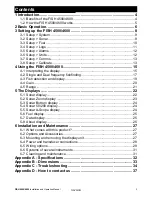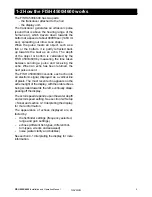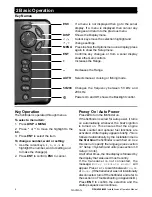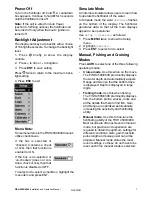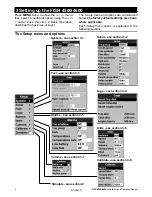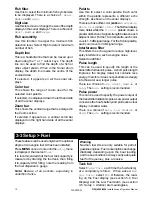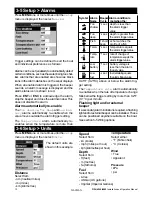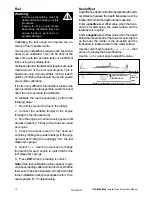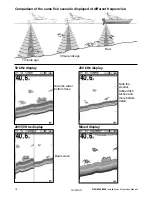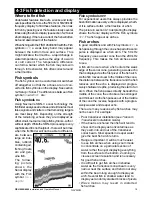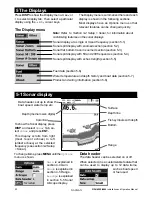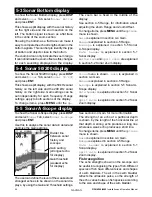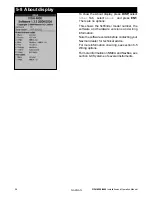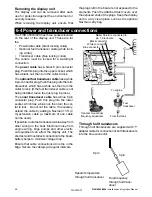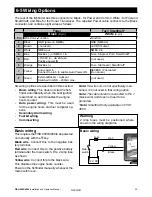
Shadows
Shadows are created around areas where the ultrasonic beam cannot ‘see’. These areas include hollows
on the bottom or beside rocks and ledges, where the strong echoes returned off the rocks obscure the
weak echoes of the fish and may also create a double bottom trace. See following for an example of
the sonar display in such an environment. A double bottom trace is shown on the display.
When looking for fish with the wide angled 50 kHz frequency, be aware of increased shadows. Use
the high frequency 200 kHz in areas that have rocks and ledges because this frequency reduces the
shadow effect considerably.
The differences in the cone width affect what is displayed. See section 4-2 Single and Dual
Frequency fishfinding.
Frequency and cone width
The pulse generated by the FISH 4500/4600
transducer travels down through the water,
spreading outwards to form a rough cone shape.
However, the cone width is dependent upon
the frequency of the pulse; at 50 kHz it is 45°,
whereas at 200 kHz it is 11°. The chart shows
how the cone width varies over depth for each
frequency used. Figures are approximate.
Water
Cone width
Cone width
Depth
at 50 kHz
at 200 kHz
10
8
2
20
16
4
30
25
6
40
33
7
50
41
9
60
50
11
70
58
13
80
66
15
90
74
17
100
83
19
150
127
26
200
166
38
300
249
58
400
331
77
500
414
96
600
497
116
700
580
135
800
663
154
900
746
173
1000
828
192
Depth 50
kHz
200
kHz
45°
11°
50
100
150
200
250
0
41
83
127
166
208
9
19
26
38
46
Sonar display of same area
Fish is visible on the display
Fish is hidden by the strong echoes
off the bottom and is not shown on the
display
Example of shadows
Fish is visible on the display
FISH 4500/4600
Installation and Operation Manual
16
NAVMAN
Summary of Contents for FISH 4500
Page 33: ......


